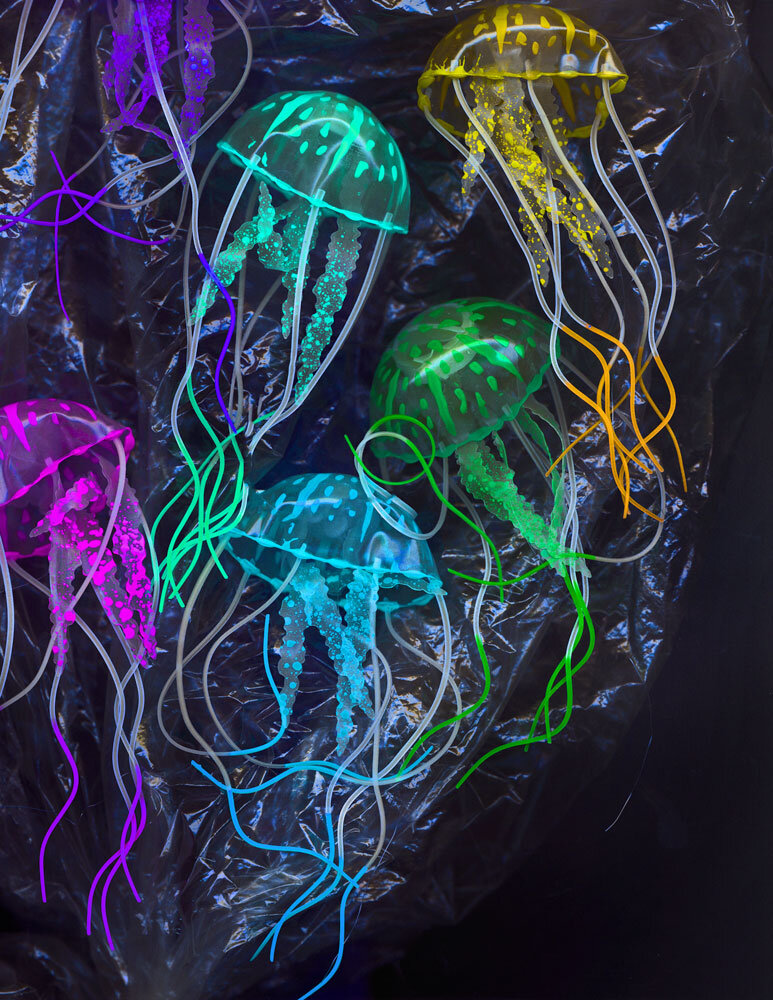PHOT 502 - Photography Technique & Process
Same Subject/Different Approach
Create a Photogram
Create a Contemporary Photograph
In this picture you have a man covered in honey. Part of the image represents a desire to hold onto a memory as it happens in real time; if only to be transformed the next second into something else.
A mask is created organically by chance. Tears form when there were none. Intimate thoughts of the past come forward even if it was not intentional for them to do so. Is there strength in those tears though? A mask is formed to wear that is as malleable as the emotions that ooze through the body. There is a story to be told within the image. Possibly of personal strength and perseverance. Intimacy found in nudity. One one hand this image is about the model. On the other hand this is about storytelling of the Bee. It’s titled, “All Eyez on Bees”. Inspired by the works of Blake Little, I found beauty in the amber of honey.
As TIME magazine has declared the bee as the most important creature on this planet, I can’t help but wonder if we take it for granted. Our existence depends on the bee’s survival. Do we take its gift for granted? I like leaving the image open ended for you to decide on which story you want to read into with this contemporary portrait.
SHOWCASE A CURRENT EVENT
Had to choose a current event and portray it in photographic form. I chose to choose the supposed scandal of Barnes and Nobles making book covers of classic literature and making them diverse portrayals before scrapping the idea. Original article below. https://boundingintocomics.com/2020/02/10/barnes-noble-celebrates-black-history-month-by-race-swapping-characters-in-classic-novels-suspends-project-over-out-cry
Diptych based off of a song: “This is America” by Childish Gambino
This diptych is based on the song, “This is America”. In both the song and the award winning music video, the artist pays awareness to both stereotypical representation and to the plight of the black American in both police cruelty and representation in general.
I wanted the two images to work side by side with one another. On the left, “This is America” and built on the backs of the African Community. On the other side, “This is America” in discord and distress where the “Black Man” is to be aware with the artist’s words of, “Don’t catch you slippin’ now”. It raises the question on if we have grown from the age of Jim Crow laws and representation, which even in the music video the artist references famous black stereotypical images.
The more I looked at these two images, the more I found them married to the same. One a literal interpretation of I am an American. The other the internal process of what could be going on inside the mind of an African American male. Both brothers in arms.
This is a collection of images where food products are paired with individual people to address ideas of mass consumerism. My approach to each image is playful, but I intend to expose the often ridiculous lengths people partake in our consumer-oriented world. Each image is a homage to a product that was memorialized through the act of wasteful intent.






















